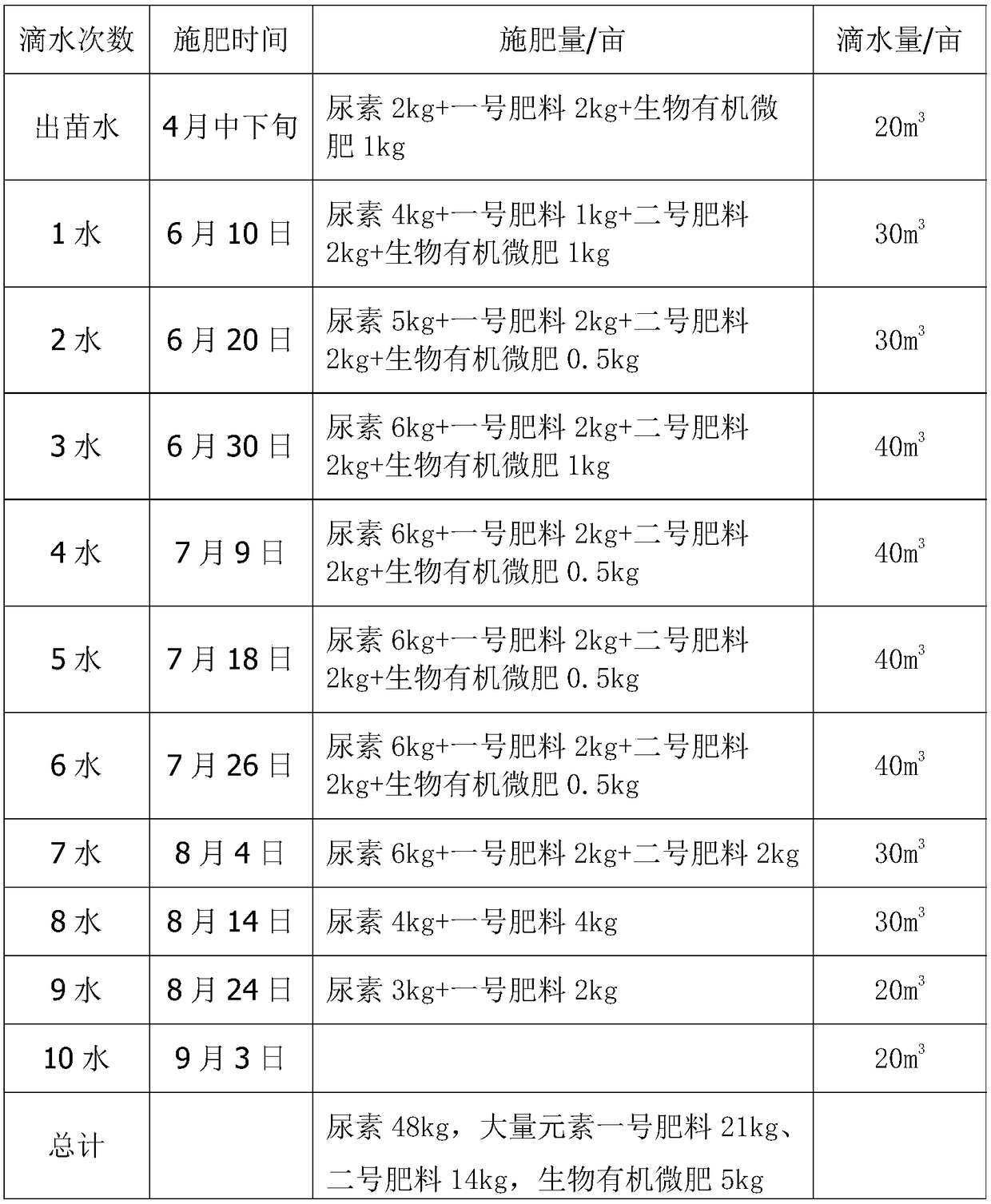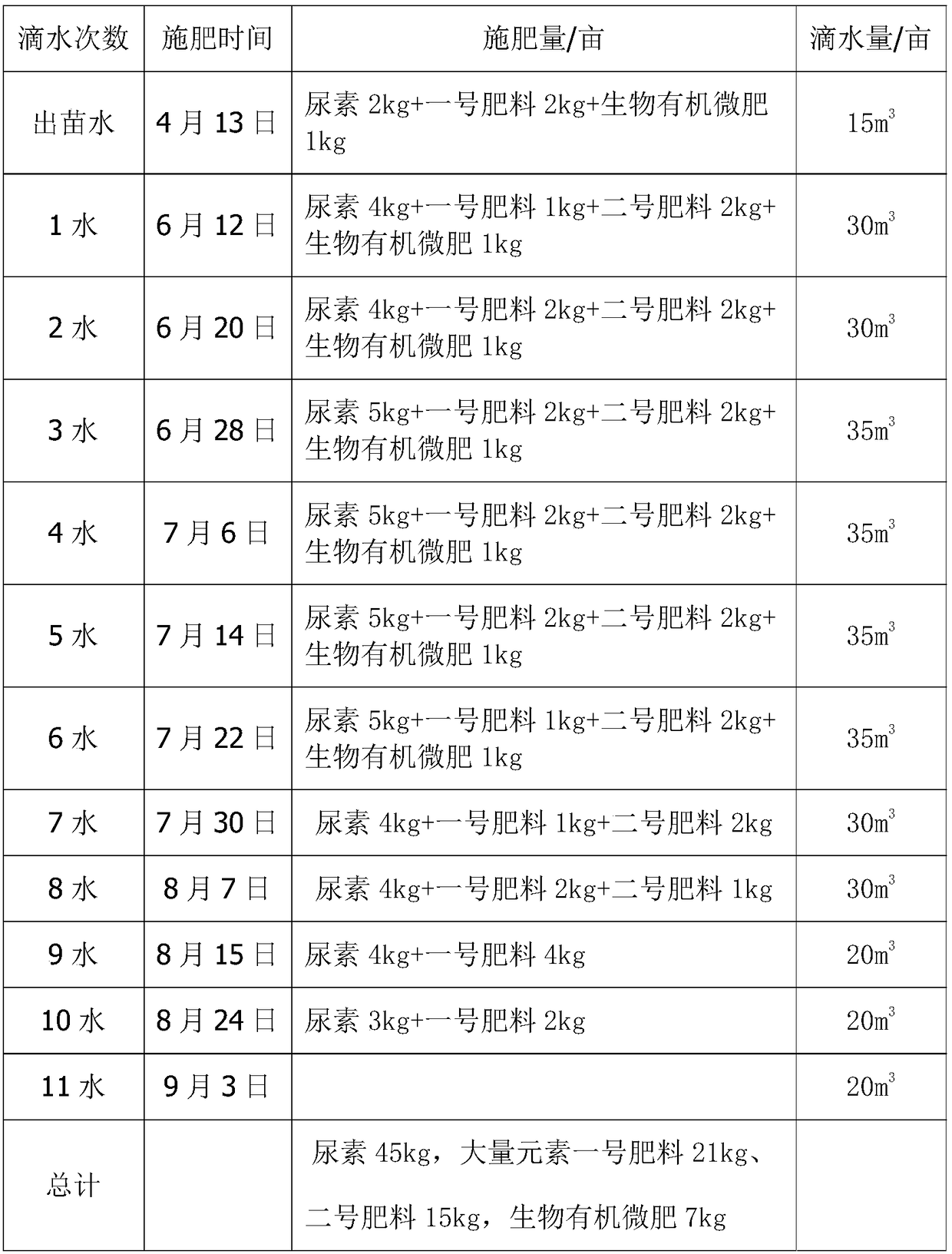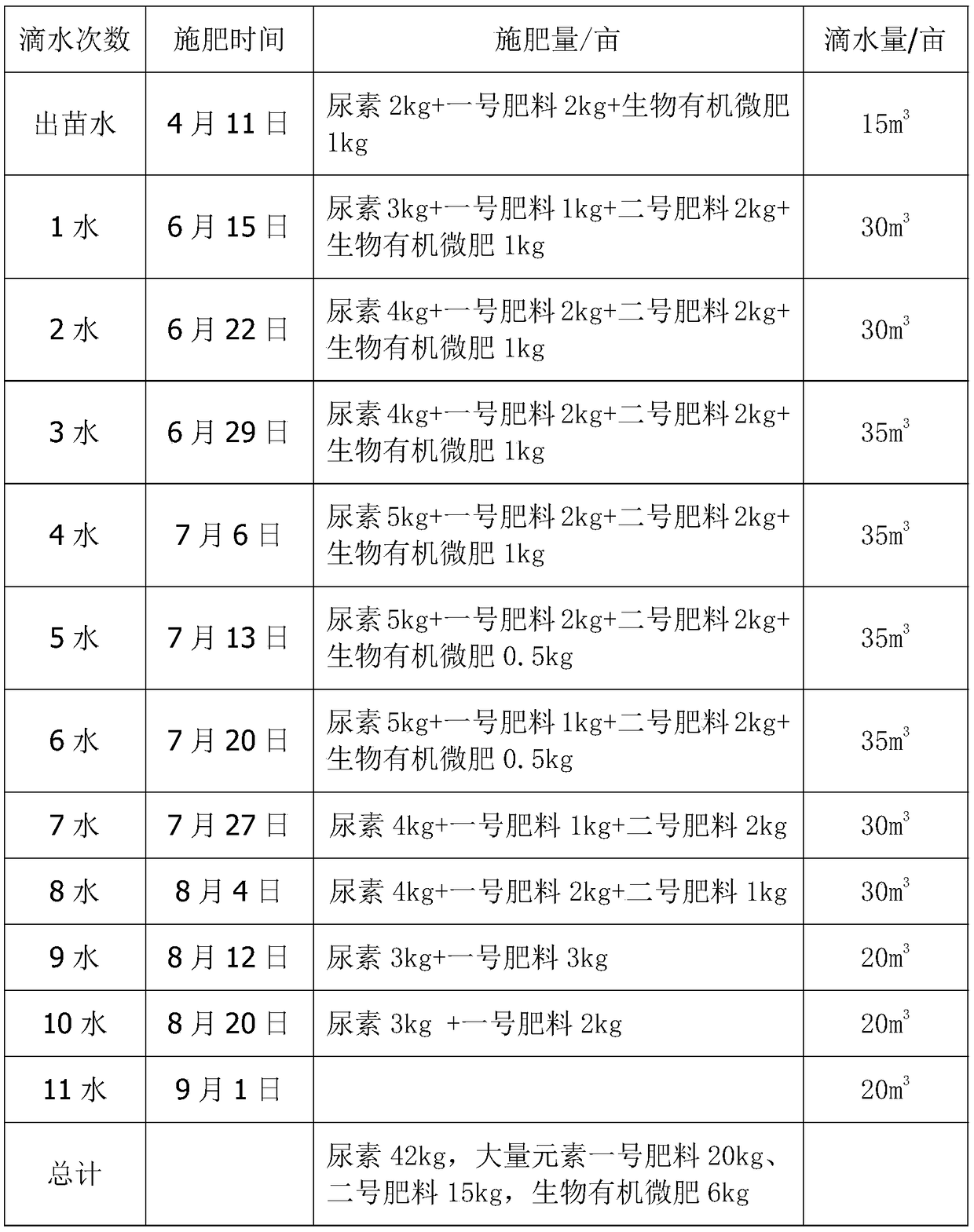Method for preventing and controlling cotton verticillium wilt
A cotton and water-soluble technology, applied in the field of crop disease prevention and control, can solve the problems of time-consuming disease resistance in breeding new varieties, damage to soil ecological balance, and ineffective effects, etc., to improve the ability to resist pathogenic bacteria and improve immunity The effect of reducing the incidence of infection
- Summary
- Abstract
- Description
- Claims
- Application Information
AI Technical Summary
Problems solved by technology
Method used
Image
Examples
Embodiment 1
[0086] In 2017, it was applied to 110 mu of drip irrigation cotton in No. 12 land of the third round of the Xinjiang Academy of Agricultural Sciences Test Site. Different growth periods, different water-soluble fertilizers were drip-irrigated with water, the dosage of water-soluble fertilizers, the time of drip application, the frequency of use and The amount of dripping water is shown in Table 1.
[0087] Table 1
[0088]
[0089] Application results: the final cotton yield is 423 kg / mu, which is 5.26% higher than that of the control field, and the disease prevention effect is increased by 43.8%.
Embodiment 2
[0091] In 2017, it was applied to 190 mu of drip irrigation cotton in the No. 8 land of the 2nd Company of the 125th Regiment of the 7th Division of the Kuitun Corps. In different growth periods, different water-soluble composite fertilizers were drip-irrigated with water, the dosage, drip application time, and application of water-soluble composite fertilizers. The number of times and the amount of dripping water are shown in Table 2.
[0092] Table 2
[0093]
[0094] Application results: the final cotton yield is 415 kg / mu, which is 12.16% higher than that of the control field, and the disease prevention effect is increased by 55.0%.
Embodiment 3
[0096] In 2017, it was applied to 210 mu of drip irrigation cotton in No. 16, 8th Company, 129th Regiment, 7th Division, 129th Regiment of the Kuitun Corps. In different growth periods, different water-soluble composite fertilizers were drip-irrigated with water, the dosage, drip application time, and application of water-soluble composite fertilizers The number of times and the amount of dripping water are shown in Table 3.
[0097] table 3
[0098]
[0099] Application results: the final cotton yield is 405 kg / mu, which is 9.5% higher than that of the control field, and the disease prevention effect is increased by 47.6%.
[0100] Explanation: all mentioned contrast field among the above-mentioned embodiment 1, embodiment 2 and embodiment 3, this contrast field refers to only applying conventional macroelement water-soluble fertilizer (urea, No. 1 fertilizer and No. 2 fertilizer).
[0101] The control method of the present invention has been demonstrated in the key cotto...
PUM
 Login to View More
Login to View More Abstract
Description
Claims
Application Information
 Login to View More
Login to View More - R&D
- Intellectual Property
- Life Sciences
- Materials
- Tech Scout
- Unparalleled Data Quality
- Higher Quality Content
- 60% Fewer Hallucinations
Browse by: Latest US Patents, China's latest patents, Technical Efficacy Thesaurus, Application Domain, Technology Topic, Popular Technical Reports.
© 2025 PatSnap. All rights reserved.Legal|Privacy policy|Modern Slavery Act Transparency Statement|Sitemap|About US| Contact US: help@patsnap.com



